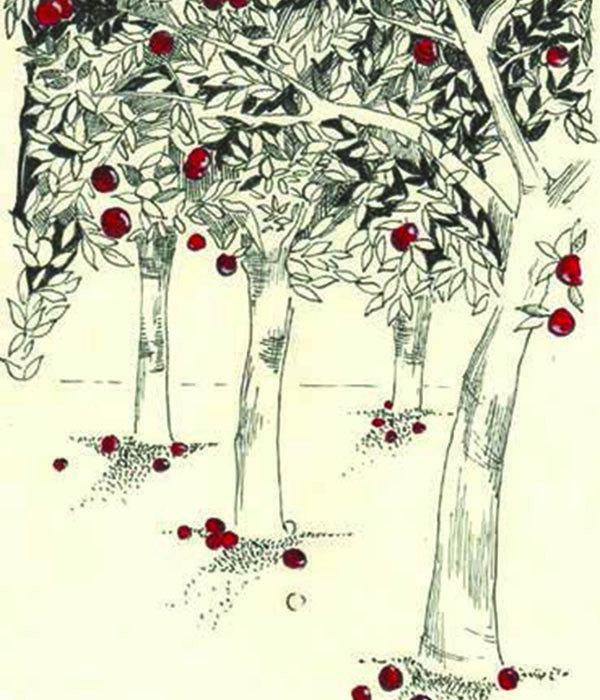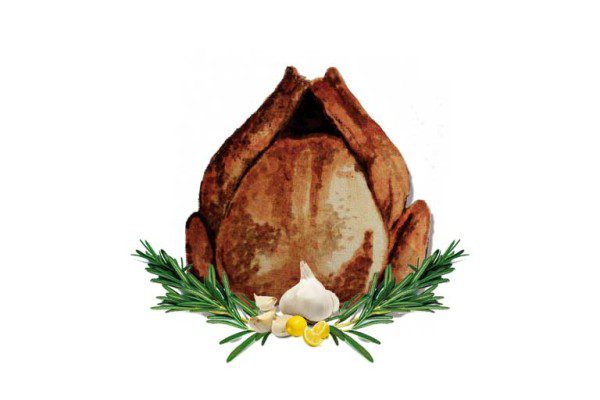Anuradha Bhasin Jamwal traces the politically engendered ruptures in the natural movements and historical associations of food in the Kashmir region, leading to a story of prolonged deprivation in a land of plentiful natural resources.
You are what you eat, goes the old saying. It may not necessarily just refer to the nutritional intake required scientifically by a body. When it comes to a place like Jammu and Kashmir, with its diverse geography, culture, politics and its landlocked nature, what one eats or gets to eat also mirrors the geo-politics of the region. Food is a binder and it is a divider. It is about the rich flavoured cuisines like the 24-course minimum fare of Wazwan. It is also about deprivation and struggles. It is also about the state’s complex politics, its varied weather, its fairweather roads, its system of land ownership and possession and about its divisive aspirations.
Food and food storage remain essential issues of governance in this state, where most areas are land-locked and completely cut off from rest of the world in the winters; the short duration (five months) of the temperate season involves the long, tedious exercise of ensuring enough food supplies to the winter zones of the state, where remote, snow-bound areas remain practically cut off, for months together in some cases. Zoji La Pass, the lifeline to the Ladakh region, closes down from October to April. Some interior roads within Ladakh are further in shambles and stocking food supplies to these areas can be quite a cumbersome task. So it is with the case of Kashmir Valley, the hilly areas of Doda, Kishtwar, Bhaderwah, Poonch and Rajouri, where the highways are often prey to bad weather conditions, landslides and avalanches. It is not uncommon to hear of complaints and protests revolving around food shortage, black marketing and unscrupulous elements running ration depots from these winter zones, where life gets tougher as the mercury descends and food is scarce, people are left to survive on whatever food grains have been stocked and sun dried vegetables.
That is only the simple part of the story. The fair-weather road network, the geographical topography and communication add to the complex politics and conflict in the story of availability and self sufficiency of food. Before 1947, the main trade route into Kashmir Valley was from Rawalpindi via Muzaffarabad, the capital of Pakistan administered Jammu and Kashmir. The road that moved along the contours of river Jhelum was blocked by Pakistan in 1947, at the time of the attack of armed tribals and, consequently, the Instrument of Accession and landing of the Indian army in Srinagar. It was the only year round road that did not succumb to the vagaries of weather, keeping supplies going in and out every season. It was also the shortest possible route to the nearest commercial hub of Rawalpindi, making it easy for Kashmir’s orchardists to merchandise their apples and pears, and import rock salt from the other side. The blockade, thereafter made permanent due to an unsettled dispute, severed the road and stopped the travel until 2005, when trade was resumed across Line of Control, though only as part of a symbolic goodwill gesture. Thus, the lifeline of Kashmir Valley and the Ladakh region, to this day, remains the Banihal Cart Road via Jammu.
Jammu province’s diverse political aspirations are clearly distinct from Kashmir. So are the cultures and languages of these two regions. But some cultural overlaps and linkages have caused a kind of cultural fusion, also integrating the regions with intermingling of food habits – popularising the rich wazwan and saffron tea from Kashmir and the humble rajma chawal of Jammu across the state. The interdependence, however, rests largely on trade and supplies; the plains of Jammu District being the main trading centre catering to the markets across the state.
It was this faith and integration, enforced by mutual interests, which lay in disarray in 2008, when the Amarnath land agitation in Kashmir Valley inspired a counter agitation in Jammu. The Hindutva groups spearheading the Jammu agitation announced an economic blockade to the rest of the state, particularly Kashmir Valley. Truckloads were waylaid and drivers attacked on the highways by the goons of various saffron brigade wings. The traders’ organisations supporting the agitation ensured that food supplies were not sent and apples coming from Kashmir rotted on the way.
The economic blockade put trade and economy in a quandary for over a year, making traders, particularly those from the Jammu region, who depend mainly on the markets elsewhere in the state, suffer its consequences for a long time. However, the immediate consequence of the economic blockade was a valley based mass movement for opening the Muzaffarabad road for regular trade. From 1947 to 2008, history came a full circle and food remained central to how politics shaped itself around the anti-Pakistan and anti-Jammu narratives of the time.
Food, in fact, has been an important element of the sociopolitical landscape for years, even as it is rare to find people facing starvation and acute hunger, as is the story in most other parts of Indian sub-continent. The land, by and large, is fertile and the spectacular land reforms of 1950s, the brain-child of Sheikh Mohammad Abdullah and his deputy Mirza Afzal Beg, ensured ownership of land to peasants who tilled the land. The experiment remains unique and its success so phenomenal that Abdullah’s party continues to have a committed vote-bank more than six decades down the line among people who benefitted from these land reforms. The largely unpopular rule of the Dogra Maharaja in Kashmir, under which peasants were forced to part with their agricultural produce, and also in parts of the Jammu region where, as a fallout of world war II, food shortages led to the famous Roti Agitation of the 1940s, may have been the guiding principles for Sheikh’s National Conference while drafting the land reforms. They sought to benefit the landless, the socially and economically oppressed sections of the society, and ensure food and the vital land rights that remain central to food security.
The picture, however, has not been rosy. Excessive and prolonged conflict with a disproportionately sized military legitimises forceful occupation of land- often fertile agricultural farms and orchards, in the name of national security and territorial safeguarding -often for erecting huge camps, bunkers, and border fencing and for creating minefields that as an unspecified policy, are never de-mined along the Line of Control. The monetary compensation is hard to get, often marked by casual and bureaucratic delays and often, too meager. Perpetual displacements and mined fields since the Kargil war have already reduced several villages in the Akhnoor sector on the Line of Control to penury. In Poonch borders, old timers recall the prosperity of their land, now reduced by fencing, militarisation and landmines, owing to its proximity and access to Rawalpindi. It was this impact of militarisation on food producing lands that inspired Mufti Mohammwd Sayeed to cash in on for horizontal political penetration, when he took over as Chief Minister of the state in 2002. Well aware of his limited powers in reducing the footprints of the armed forces, his focus remained the de-occupation of school buildings and orchards in Kashmir Valley. The story of an orchard owner, who tasted the apple from his own land after 17 years in those days, remains the basic crux of the food story of this state of abundant resources where socio-political and geographical complexities create their own narratives of deprivation and denial.


